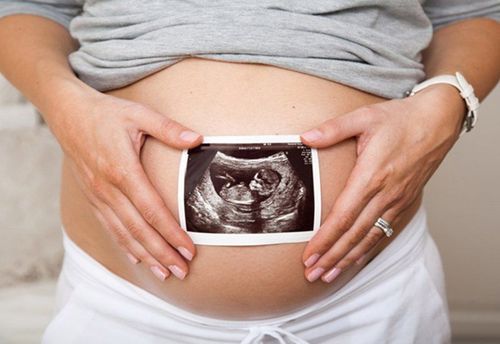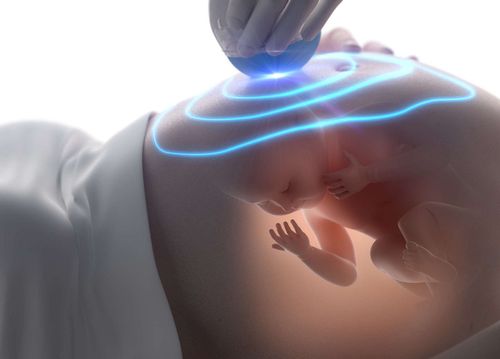This is an automatically translated article.
The article was professionally consulted by Doctor Head of Obstetrics and Gynecology Department, Vinmec Hai Phong International General Hospital.
According to statistics, the rate of umbilical cord knotting accounts for 0.3-2.2% of pregnancies, and the fetal mortality rate with this condition is often 4 times higher than in normal pregnancies. Therefore, knotted umbilical cord is a "threat" danger to millions of pregnant women in our country and around the world. Recognizing signs of knotted umbilical cord on ultrasound early will help pregnant women take timely response measures.
1. What is knotted umbilical cord?
The umbilical cord plays an extremely important role, this is the passageway for oxygen and nutrients from mother to fetus, ensuring the baby's healthy development while in the womb. When the umbilical cord becomes a knot, it will greatly affect the process of pregnancy and labor. When this happens, the fetus will not be provided with the necessary nutrients.
The knotted umbilical cord can be loose or tightened, the degree of danger will depend on the knotted state of the umbilical cord. If the ligation is loose, the fetus will be less affected, on the contrary, if the umbilical cord is tightened, the fetal circulation will be obstructed, the baby may die right in the womb.

2. Signs of knotted umbilical cord on ultrasound
It is very difficult to determine the exact time of formation or image of the knotted umbilical cord in a mother's pregnancy, because the knotting position is not always favorable for imaging on the ultrasound machine. The knotted umbilical cord during pregnancy is difficult to detect, even through ultrasound and physical examination.
The umbilical cord ring can form very early, when the baby is only 9-12 weeks gestation. At this stage, the amniotic fluid volume is more than the actual volume displaced by the fetus. The prevention of umbilical cord knotting is very difficult, the mother can only diagnose the fetus with knotted umbilical cord by 4D ultrasound and in the first weeks of pregnancy. At this time, the fetus is small and the umbilical cord is not long, so the doctor can recognize it by identifying the umbilical cord is coiled around. The larger the pregnancy week, the longer the umbilical cord and the larger the baby, making it difficult to tell if the umbilical cord is coiled around or knotted.
The diagnosis of a knotted umbilical cord is mainly based on color Doppler fetal ultrasound and 4D ultrasound when the umbilical cord flows coiled into a circle. It should be distinguished from pseudo-knotted umbilical cord due to thickening of Wharton jelly or vascular edema of the umbilical cord, which poses no risk to the fetus during pregnancy and labor. In the later stages, through Doppler ultrasound of the umbilical artery, the fetal middle cerebral artery and measuring the fetal heart chart can help detect complications of umbilical cord knotting and fetal distress for timely emergency treatment.
In order to reduce the dangerous complications of umbilical cord knotting, pregnant women should monitor fetal movements every day, especially in the last weeks of pregnancy, visit a doctor to assess fetal health if any signs are detected. Few or weak fetal movements, protruding abdomen, not round.
3. How to cure knotted umbilical cord

It is important to follow the schedule of regular antenatal check-ups on time, especially for pregnant women who are close to their due date. In the lucky case, the pregnant woman can feel abnormal and timely examination, the doctor correctly diagnoses the knotted umbilical cord and decides to have a quick cesarean section.
Once the umbilical cord is found to be knotted, there is no way to untie this knot, the treatment now focuses only on the safety of the fetus. In most cases, a cesarean section is needed as soon as possible before fetal distress occurs. If umbilical cord knotting occurs during labor, the fetus should be monitored, measuring the heart rate to detect abnormalities of the fetal heart rate. Most cases of knotted umbilical cord require cesarean section, can not give birth naturally because the risk is very high.
As can be seen, knotted umbilical cord has no effective cure as well as prevention. Recognition through fetal movement monitoring plays a decisive role in the emergency work of knotted umbilical cord. There have been many successful emergency cases of knotted umbilical cord, but there are also countless unfortunate cases, so pregnant women should not be neglected, especially in the last months of pregnancy.
Vinmec International General Hospital offers a Package Maternity Care Program for pregnant women right from the first months of pregnancy with a full range of antenatal care visits, periodical 3D and 4D ultrasounds and routine tests to ensure that the mother is healthy and the fetus is developing comprehensively.
Pregnant women will be consulted and checked for health under the close supervision of experienced and specialized Obstetricians, helping mothers have more knowledge to protect their health during pregnancy as well as reduce reduce complications for mother and child.
Please dial HOTLINE for more information or register for an appointment HERE. Download MyVinmec app to make appointments faster and to manage your bookings easily.













